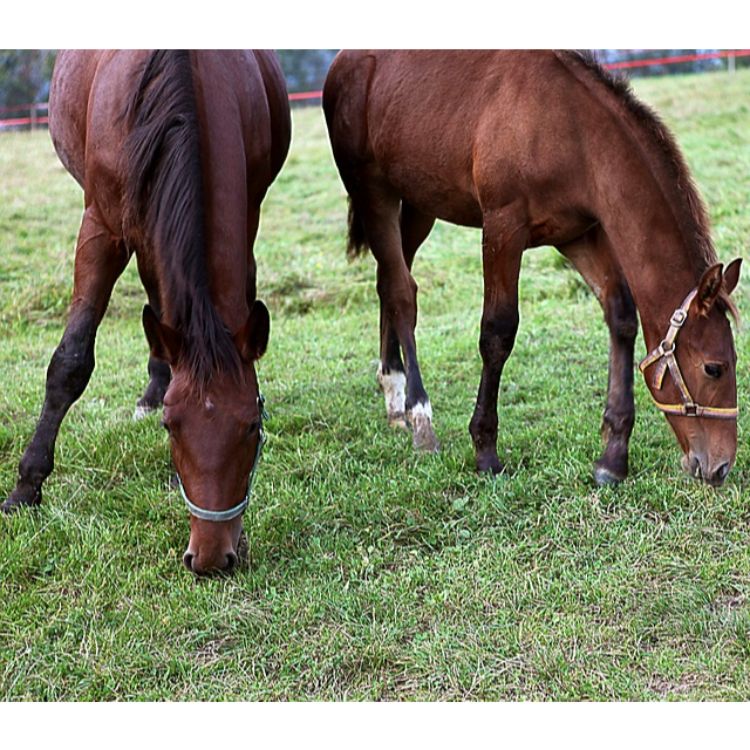Pinworm (Oxyuris equi) burden is becoming an increasing problem for UK horse owners. Pinworm is perhaps less harmful than many parasites but more of a nuisance and an irritant as its life cycle involves laying eggs externally on the horses anus. Equine Pinworm is becoming more difficult to eliminate. The female can grow up to approximately 10cm in length and are white in colour. They reside in the large intestine and attach themselves to the intestinal wall to ingest the contents for food.
Adults produce eggs approximately 5 months after the initial infection which are found on the pasture, in faeces, contaminated water fences and walls.
Eggs are ingested by the horse and L3 larvae are released in the small intestine, they then migrate to the large intestine to develop into the mucosa to L4 larvae which then emerge and mature into adults. The female adults then migrate from the large intestine to the anus where they lay eggs in clumps in a sticky substance on the skin causing irritation around the anus leading to tail rubbing. These can be removed on a daily basis by cleansing the area around the tail, anus and hindquarters with warm diluted disinfectant.
On occasion the actual female worms can be seen in the process of egg laying. She can lay up to 60,000 eggs per day. The eggs are laid in a sticky substance, which is an irritant to the horse.
Pinworm eggs do not show up very well on regular faecal exams because eggs tend to remain around the anus rather than being passed in faeces. Sometimes the female can be physically seen protruding from the anus in the process of laying her eggs. A skin scrape or sticky tape test in the area around the anus may be carried out by a vet.
The most common sign of pinworm infection is tail itching or rubbing, the itching is caused by the eggs being deposited around the anus. There are other things that can cause tail rubbing as well, so an itchy tail does not always mean there are pinworms present.
Active ingredients that treat for adult and pinworm larvae are Moxidectin, Ivermectin, Febendazole and Mebendazole with Pyrantel treating adults only.
Not all brands are licensed so care needs to be taken by checking the brand’s label.
The life cycle of the pinworm is longer than most other worms and immature stages of the worm are less sensitive to treatment which all in all could mean that infestations could take a year to clear up.
It was thought that older horses had a degree of natural immunity to pinworm, but infections are now being seen regularly in older horses as well as young. This change has been accompanied by a shortened time between infection and egg production, and the changing behaviour of the parasite could be causing a rise in stubborn infections.
Extra care should be taken in the stable environment to help reduce the risk of re-contamination from buckets, feed bowls, haynets and rugs etc. Do not share grooming brushes. After removing all bedding before it can be walked on by horses or stable staff and depositing it far away from a contaminated stable, it is important to give the area a thorough clean with a heavy duty disinfectant. Good stable cleanliness will help and is always a good idea in areas of animal care and management. In addition, don’t forget your own clothing as the eggs can attach themselves to gloves for example and are thereby easily transferred to another part of the stable or other horses.
SH Wetherald E-SQP




